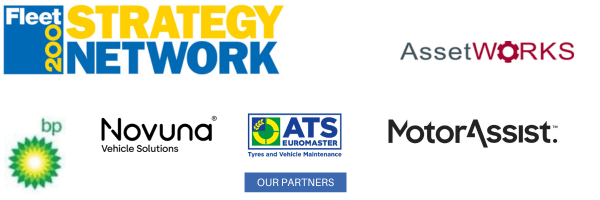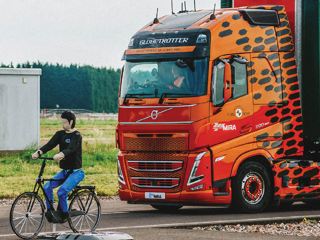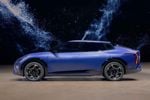Vans have dominated the discussion among fleets, with decision-makers criticising the insufficient public infrastructure, slow improvements in technology and actions of manufacturers which have been forcing them to take a certain proportion of bulk orders as electric.
The most demanding points are summarised above.
But in the debate at the recent Fleet200 Strategy Network meeting, one fleet representative said: “A major issue is the fact that a lot of the public infrastructure is slow chargers and not suitable for vans. Our drivers are also getting complaints from car drivers if they are on a public charger – we also get complaints to our call centre because our number is on the side of the van.”
Another said: “All the improvements in range and charging speeds is happening with cars and not vans; investment in vans is lagging behind. Our minimum requirement is 200 miles real-world and full loaded. Any less than that and it has no use on our fleet.”
They added: “Most of the eLCVs are being made for final mile fleets. They are taking the big volumes, but the other commercial vehicle fleets are being left out.”
An additional concern was raised by fleets about battery use in winter and summer.
“Drivers who need to sit in the van over winter use the battery to heat it up. And in summer, they use the aircon to keep cool. This is also an issue,” said one fleet manager.
- Enhanced public charging infrastructure: prioritize investment in rapid charging networks tailored for commercial vehicles, especially vans, to address slow chargers and public complaints about van drivers using car chargers.
- Demand manufacturers focus on commercial EVs: push manufacturers to develop electric light commercial vehicles (eLCVs) with a minimum 200-mile real-world range when fully loaded, addressing the lag in van-specific technology compared to cars
- Address regulatory and weight challenges: seek clarity on the 4.25-tonne derogation and resolve licensing issues for electric trucks exceeding 7.5 tonnes to ensure payload capacity and compliance with driver licensing.
- Conduct real-world testing and adjust the ZEV Mandate: advocate for real-world testing of fully loaded vans in extreme weather to provide accurate range data, and support a simplified ZEV Mandate transition (e.g 70 - 80% in 2034 to 100% in 2035) to accommodate complex vehicles, like pick-ups.
Vans have dominated the discussion among fleets, with decision-makers criticising the insufficient public infrastructure, slow improvements in technology and actions of manufacturers which have been forcing them to take a certain proportion of bulk orders as electric.
The most demanding points are summarised above.
But in the debate at the recent Fleet200 Strategy Network meeting, one fleet representative said: “A major issue is the fact that a lot of the public infrastructure is slow chargers and not suitable for vans. Our drivers are also getting complaints from car drivers if they are on a public charger – we also get complaints to our call centre because our number is on the side of the van.”
Another said: “All the improvements in range and charging speeds is happening with cars and not vans; investment in vans is lagging behind. Our minimum requirement is 200 miles real-world and full loaded. Any less than that and it has no use on our fleet.”
They added: “Most of the eLCVs are being made for final mile fleets. They are taking the big volumes, but the other commercial vehicle fleets are being left out.”
An additional concern was raised by fleets about battery use in winter and summer.
“Drivers who need to sit in the van over winter use the battery to heat it up. And in summer, they use the aircon to keep cool. This is also an issue,” said one fleet manager.
Fleets also condemned the actions of a handful of manufacturers which last year took the decision to insist a certain proportion – usually 10% - of bulk orders were for full electric vans, as they sought to meet the threshold set by the ZEV Mandate.
“It became a case of not buying the best van for the job,” said one fleet.
EU tax incentives encouraging the uptake of plug-in hybrid vehicles was also noted; in the UK, the opposite was the case on cars, with BIKs due to rapidly rise in 2028.
In terms of the type of support and clarity fleets wanted to see from the Government, the rules surrounding the 4.25-tonne derogation was the top priority, following the closure of the recent consultation.
However, an additional weight-related concern was raised by one fleet about the 7.5-tonne truck threshold where grandfather rights allow some staff (those who passed their test before 1997) to drive trucks up to 7.5t on a car licence.
“We also have a licence change above 7.5 tonnes but what happens with electric trucks at this weight if they become 8.5 tonnes to retain the necessary payload?” they asked.
Fleets also called for real-world testing of fully loaded vans in winter to give accurate range figures, and for greater investment in a rapid charging public network infrastructure across the country.
What they do not want is any continued graduation in the ZEV Mandate targets between 2030 (when 70% of new vans and 80% of new cars sold by manufacturers must be zero emission) and 2035 when all new vans and cars must be zero emitting.
“By 2030, it will be the most difficult vehicles that fall into these categories, such as pick-ups and cranes, so we would rather go from 80%/70% in 2034 to 100% in 2035,” one fleet explained.
“We all want to make the transition, but it’s a lack of suitable product from the manufacturers that is stopping us.”
Another said: “Some fleets, like us, are now putting a pause on eLCVs and waiting to see what future models and technology comes to market. We have done the easy stuff and now we are waiting for the manufacturers. As a result, we have no choice but to continue buying diesel.”
While only a few of the fleets were also operating HGVs, they highlighted another issue about driver hours and charging times: “Will charging be part of drivers’ hours or will it be done in their own time? How does that get worked in.”
Login to continue reading.
This article is premium content. To view, please register for free or sign in to read it.























Login to comment
Comments
No comments have been made yet.